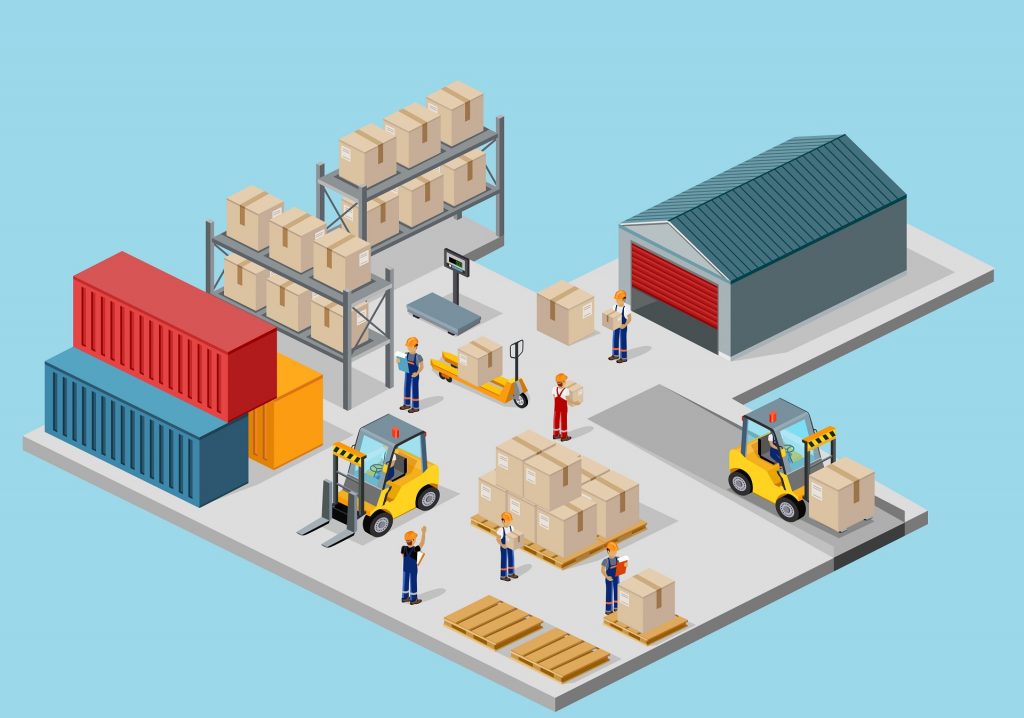
Inventory Management Guide – The logistics and warehousing sector of India has undergone a major transformation in the last few years. With an introduction of more structured policies, this sector is expected to cut back logistics costs from the present 14% to 10% of the total GDP by the year 2022.
One of the key factors that can bring about this change and help organisations cut back on their logistics and warehousing expenses is proper inventory management.
Inventory management is among the most crucial functions when it comes to proper business administration. Improper inventory management can even lead to production stoppage, with the manufacturing unit incurring substantial loss.
But, before learning more about the process, it is important to know – what is inventory management.
What is inventory management?
It is the combination of three different processes, namely- ordering, storing and utilising the inventory. It includes management of various idle stocks of a company that holds economic value, like raw materials, various components, finished products, etc. The process also includes the processing and warehousing of these products.
Following is an elaboration on various types of inventory –
- Raw materials –
Raw material refers to any stock of material that is held by a manufacturing company with plans to utilise them for manufacturing in the future. This particular inventory also includes materials that are in transit to a manufacturing unit.
- Components or work in progress –
This category includes stocks that are yet to be converted into finished goods to bring maximum value for the company. The stocks in this category are in different manufacturing stages, waiting to be processed.
- Finished goods –
These are goods that have completed the manufacturing process but are yet to be sold. These also include goods that are in the process of being delivered to dealers.
Thus, “what is inventory management”, refers to the effective handling of the above few inventory types, to maximise the profits of a company. Proper inventory management also helps to keep cash flow steady and is one of the key factors to be a successful small business owner.
Adverse effects of improper inventory management
It is crucial for business owners to learn inventory management because improper handling of the same can lead a company to incur unforeseen costs and increase working capital utilisation.
Following are a few effects of improper administration of inventory control techniques –
- Increasing storage cost –
It is one of the most successful inventory management techniques as most businesses use spaces like large warehouses to store their stocks. If the company fails to manage fast and slow-moving inventories efficiently, it can end up incurring unnecessary costs of utilising these storage facilities.
- Dead stock –
If an inventory is not monitored carefully, a company can end up with stocks that are of no value in the current market. Additionally, improper management of stocks can also lead to expiry of perishable materials rendering them useless.
These are the two major perils of inefficient inventory management that can lead businesses to incur a substantial loss.
Inventory control methods to manage inventory better
A company’s inventory management methods depend on the type of products it manufactures. Following is all you need to know about inventory management techniques –
- Material requirement planning
Planning material requirement is dependent on a company’s sales forecasts. It means that a company should have accurate estimates of inventory needs to communicate the same to suppliers on time.
- Economic order quantity
This is a model for inventory management which is implemented by calculating the units a particular business should add to its inventory to ensure a reduction in the total cost incurred for the same.
- Just in time management
This is the method through which companies plan to maintain the inventory that they require to produce and sell products in the near future. This inventory management technique to save money helps companies to reduce storage costs significantly.
However, even after implementing effective management techniques, associated inventory costs can amount to quite a lot. But the easy availability of business loans has managed to reduce this financial burden to quite an extent. For instance, the considerable loan amount value offered by financial institutions like Bajaj Finserv is extremely useful when it comes to managing these costs.
Thus, with a comprehensive idea of “what is inventory management” and the funds to do so effectively, individuals can help boost the growth and success of their business with ease. Also, with proper utilisation of capital for effective inventory management, business owners can considerably reduce their expenses on this sector going forward.
